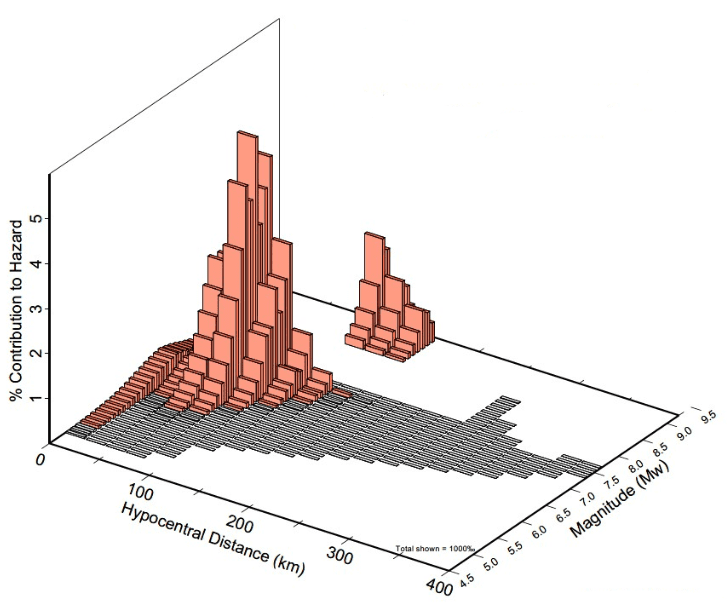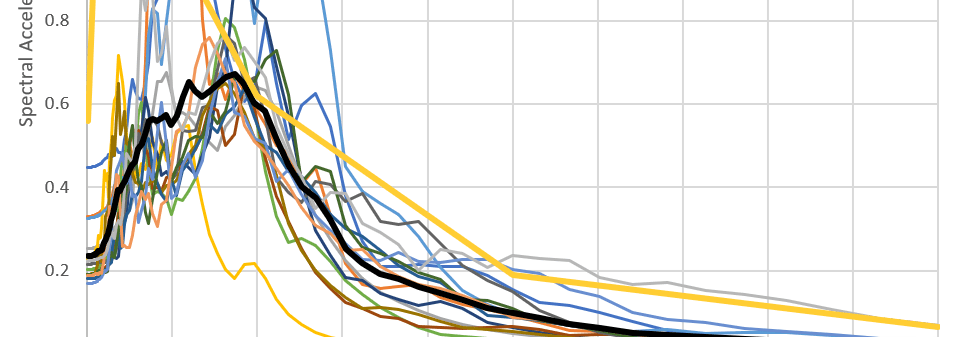SEISMIC DESIGN & GEOTECHNICAL EARTHQUAKE ENGINEERING
As much of British Columbia is seismically active, Ecora geotechnical engineers are well versed in providing practical and economical earthquake resistant foundation and ground improvement solutions. We have experience in the following:
EARTHQUAKE GROUND MOTION DEVELOPMENT
Ecora will develop earthquake time histories for a project requiring site specific ground response analysis or ground motions for dynamic analysis. We will use spectral matching or linear scaling (or a combination) techniques and would typically match to the target response spectrum in accordance with current guidelines.
GROUND RESPONSE ANALYSIS
Where a project warrants a site-specific seismic response (such as Site Class F soils or a structure with an unusual configuration), Ecora can conduct ground response analysis using 1D equivalent linear total stress analysis (e.g. SHAKE). If deemed necessary, we can also provide nonlinear effective (or total) stress analysis using programs such as D-MOD, FLAC and PLAXIS. Following this analysis, Ecora provides the project structural engineer with response spectrum plots (spectral acceleration versus period) typically compared with the code-generated generic response spectrum.
DYNAMIC TIME HISTORY ANALYSIS (E.G., FLAC, PLAXIS ANALYSIS)
Depending on the project requirements, Ecora can conduct dynamic time history analysis using programs such as FLAC and PLAXIS, where advanced soil constitutive models such as PM4Sand, PM4Silt and UBCSand will be used to simulate degradation of soft stiffness and strength of soils under cyclic loading. We have previous experience in conducting similar analysis for industrial facilities, near-shore structures, wharfs, dams, bridge sites, natural slopes, etc. If required, the modeling will include structural components such as buildings, piles, anchors and pipes.
LIQUEFACTION ANALYSIS
Ecora can determine the liquefaction potential of the project site using a simplified liquefaction triggering analysis procedure whereby the Cyclic Stress Ratio (CSR) is either determined using peak ground acceleration determined through code-based amplification factors or using site specific response analyses. The Cyclic Resistance Ratio (CRR) is typically determined using the Cone Penetration Test (CPT) results or the Standard Penetration Test (SPT) results and in some cases the shear wave velocity readings.
SEISMIC SLOPE STABILITY
Apart from numerical modeling, seismic-induced ground displacements in sloping grounds will be determined using the Newmark Sliding block method or an updated method from the Newmark family of methods such as Bray and Travasarou (2007). This type analysis is sometimes undertaken as a screening method to determine the need for more advanced analysis.
SEISMIC DESIGN OF RETAINING WALLS
Ecora undertakes seismic analysis for retaining walls for yielding and non-yielding walls and can provide seismic earth pressure diagrams.
REGIONAL SCALE SEISMIC VULNERABILITY ASSESSMENT
Following a different approach than the common “site specific” seismic assessments, these regional scale vulnerability assessments are conducted at planning stages to determine the seismic resiliency of the overall system and identify components essential for the recovery and post-earthquake functionality. This type of study requires good understanding of the likely failure modes of the components to rank the vulnerability in a qualitative manner. Ecora can assist with geotechnical input for regional-scale studies carried out for various types of assets including, but not limited to pipelines, bridges, road networks, buildings and other critical infrastructure (e.g., pump stations, reservoirs, treatment facilities).





